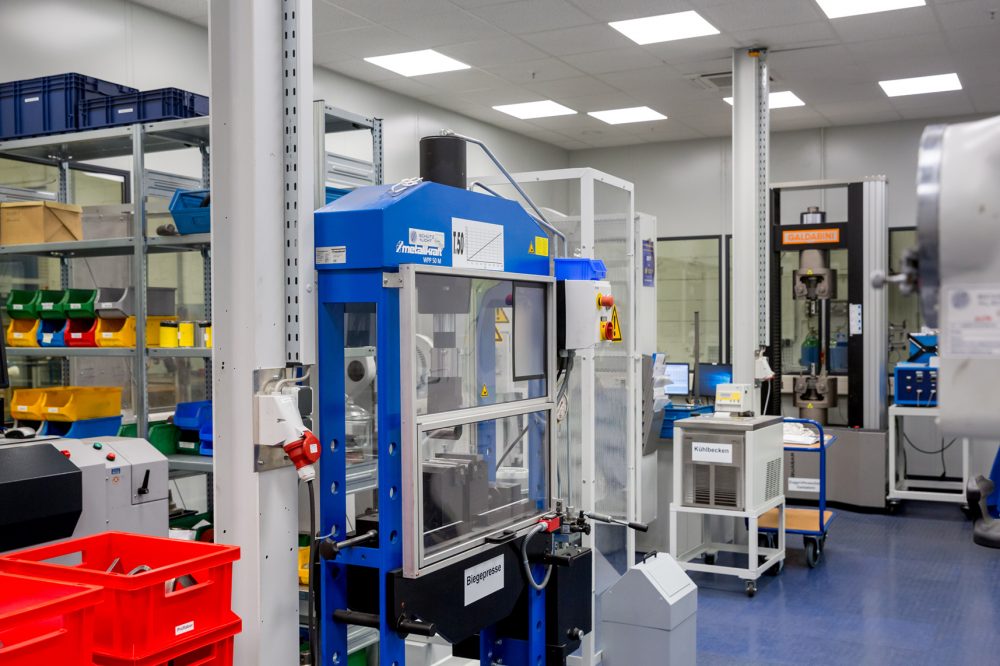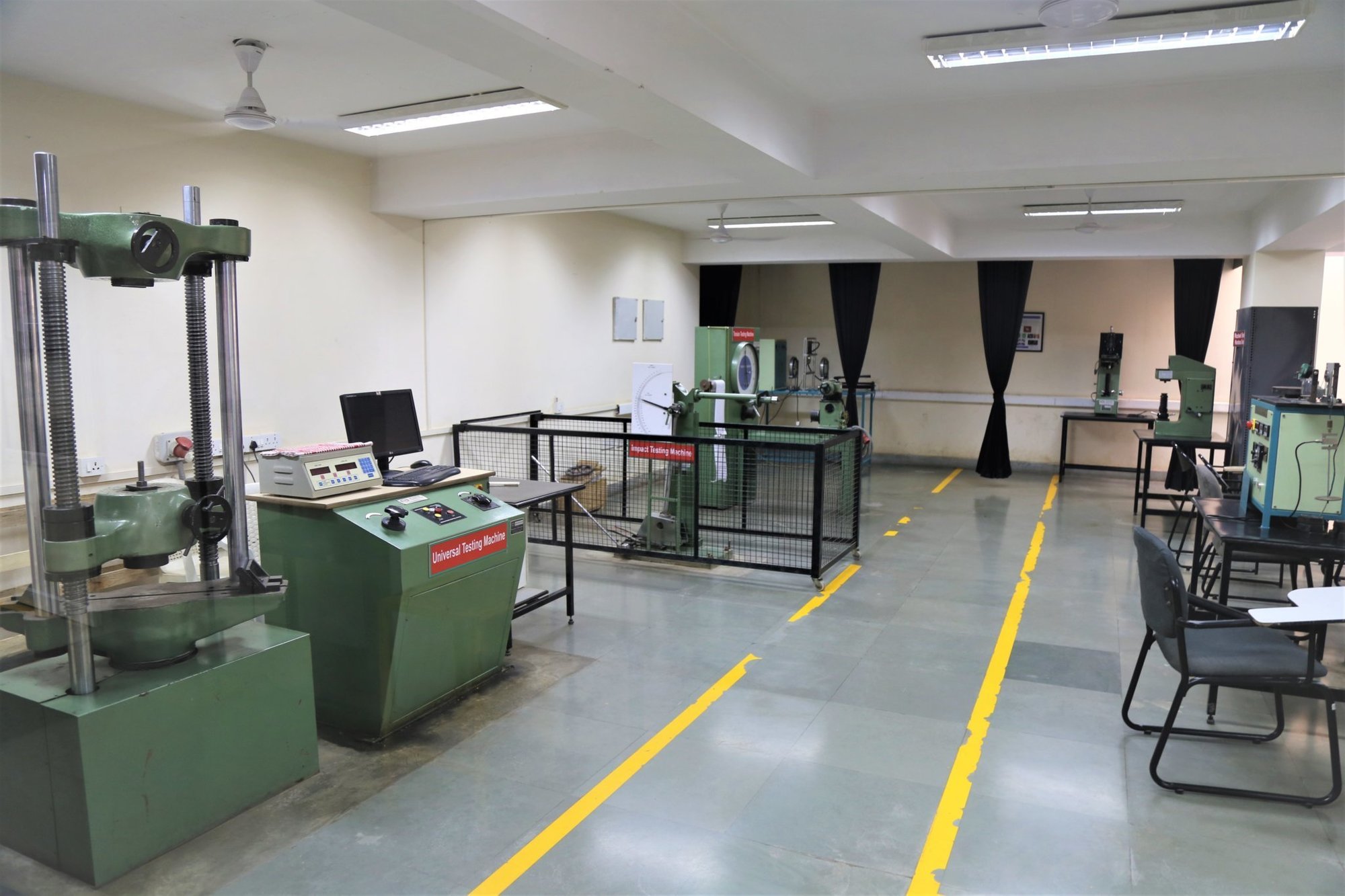Material Testing Lab Insights: Uncover the Science Behind Project Longevity
Material Testing Lab Insights: Uncover the Science Behind Project Longevity
Blog Article
Introducing the Tricks of Products: Technologies in Modern Product Testing
In the ever-evolving globe of products scientific research, scientists are constantly looking for methods to open the surprise tricks of numerous materials. The pursuit to recognize the residential properties, habits, and potential applications of products has led to amazing advancements in modern material testing. From nanotechnology and man-made knowledge to non-destructive testing and high-throughput screening, new techniques are arising that assurance to change our understanding of products.
Nanotechnology: Enhancing Material Evaluating Abilities
Nanotechnology has actually revolutionized material screening by boosting its capabilities and permitting unmatched accuracy and accuracy. With the capacity to adjust and regulate materials at the nanoscale, researchers and designers have actually had the ability to discover brand-new insights right into the habits and properties of different products. This has actually opened up a whole brand-new opportunity for product testing, enabling researchers to dive deeper into the fundamental features of materials and explore their prospective applications.
One of the key advantages of nanotechnology in product screening is its capacity to offer very specific dimensions. By utilizing specialized nanoscale probes and sensing units, researchers can get comprehensive information concerning a product's mechanical, electrical, and thermal residential properties. This degree of accuracy is vital for industries such as aerospace, automotive, and electronic devices, where also the slightest variance from desired specifications can have considerable repercussions.
Furthermore, nanotechnology has enabled the development of unique testing techniques that were previously unimaginable. As an example, scanning probe microscopy techniques, such as atomic force microscopy and scanning tunneling microscopy, make it possible for researchers to picture and adjust products at the atomic level. This extraordinary degree of control and observation has led the way for developments in understanding product behavior and making ingenious products with tailored residential or commercial properties.
Expert System: Reinventing Material Analysis
The combination of expert system has actually produced a transformation in material analysis, considerably boosting the speed, precision, and effectiveness of the process. With the capacity to analyze vast quantities of information in real-time, expert system (AI) algorithms can swiftly recognize patterns, anomalies, and relationships that may otherwise go unnoticed by human experts. This allows scientists and scientists to acquire a much deeper understanding of materials and their residential properties, resulting in the development of brand-new and better products for different applications.
AI-powered product evaluation likewise allows for the prediction of material behavior under different problems, saving substantial time and resources in the testing phase. By imitating numerous situations, AI formulas can accurately predict just how products will do in various environments, enabling engineers to make informed decisions regarding their viability for certain applications.
Moreover, AI algorithms can maximize material testing processes by immediately readjusting criteria and experiment styles based upon real-time comments (material testing lab). This not just speeds up the screening procedure yet also makes sure that the optimum quantity of information is acquired from each experiment, leading to even more reliable and extensive results

Non-Destructive Testing: Exploring Materials From Within
Non-destructive screening methods use an one-of-a-kind means to discover the interior structure and properties of materials without triggering any damages or modification. These strategies have actually transformed the area of product testing by enabling engineers and scientists to take a look at materials from within, without endangering their integrity. Non-destructive screening methods use different technologies and methods to assess materials and offer valuable insights right into their make-up, issues, and efficiency.
One widely made use of non-destructive screening technique is ultrasonic testing, which entails sending high-frequency sound waves with a material and evaluating the mirrored waves to determine its interior structure. This approach is commonly made use of to find imperfections, such as spaces or splits, in steels, composites, and concrete. An additional method, referred to as X-ray radiography, makes use of X-rays to develop images of the inner features of a product, making it especially useful for inspecting welds and identifying surprise flaws.
Other non-destructive testing techniques consist of magnetic particle testing, which uses electromagnetic fields to identify surface and near-surface problems in ferromagnetic products, and eddy present screening, which uses electro-magnetic induction to discover Extra resources imperfections in conductive materials. These methods, in addition to others like thermography and aesthetic evaluation, give valuable details regarding the architectural stability and high quality of materials, ensuring their integrity and safety and security in different applications.
Non-destructive screening is particularly critical in sectors such as aerospace, automotive, power, and construction, where the efficiency and reliability of products are of utmost relevance. By enabling extensive material evaluation without triggering damages or change, non-destructive screening methods play an essential duty in making sure the top quality and sturdiness of materials in a vast array of applications.
High-Throughput Screening: Accelerating Material Exploration
High-throughput testing strategies have changed the procedure of material discovery by accelerating the recognition and analysis of new materials. This method enables scientists to rapidly evaluate a multitude of products, allowing the recognition of encouraging candidates for further investigation.
High-throughput screening involves the use of automated robotics and systems to execute experiments on a big range (material testing lab). This enables scientists to promptly examine a variety of materials under different conditions, such as pressure, make-up, and temperature level. By evaluating the resulting data, researchers can determine products with preferred homes, such as high strength, conductivity, or thermal stability
One of the key benefits of high-throughput testing is its ability to speed up the discovery of read review brand-new products with improved residential properties. Conventional approaches of material exploration often involve trial and error, which can be lengthy and ineffective. With high-throughput testing, researchers can systematically check out a vast selection of products in a fraction of the time, dramatically accelerating the discovery process.
Moreover, high-throughput screening can also give useful insights into the underlying structure-property connections of products. By examining a lot of products with varying structures and make-ups, scientists can much better recognize how different elements affect product residential or commercial properties. This understanding can after that be utilized to develop and optimize materials with particular properties for various applications, such as power storage, electronic devices, and healthcare.
Advanced Simulation Techniques: Predicting Product Performance
Advanced simulation techniques play an essential role in forecasting the performance of products in different applications. These strategies involve the use of computer versions and mathematical algorithms to replicate the actions of products under various conditions. By replicating the behavior of materials at the molecular and atomic degree, scientists can obtain beneficial insights right into their mechanical, thermal, and chemical homes.
One of from this source the vital advantages of innovative simulation strategies is their ability to forecast product efficiency before physical testing. This not just conserves time and resources but likewise allows scientists to check out a larger range of products and design criteria. In the field of products layout, simulations can assist identify the optimal make-up and framework of a material to achieve specific buildings.

Along with anticipating material performance, these simulation strategies also aid in recognizing the underlying devices that govern product habits. By evaluating the simulation results, scientists can obtain insights into the essential principles that determine the residential or commercial properties and efficiency of products.
Conclusion
In verdict, the improvements in material screening methods have actually greatly boosted our understanding and analysis of numerous materials. Nanotechnology has enabled for boosted abilities in screening and manipulating products at the nanoscale. Non-destructive testing has allowed us to check out the internal residential or commercial properties of products without causing damages.
The mission to recognize the buildings, actions, and potential applications of materials has led to impressive technologies in contemporary material screening. These methods have changed the area of product testing by making it possible for researchers and designers to take a look at products from within, without compromising their stability. By testing a huge number of materials with varying structures and compositions, researchers can much better recognize just how different elements affect product homes. In the area of products layout, simulations can help recognize the optimal make-up and structure of a material to accomplish specific buildings.
In final thought, the improvements in material testing methods have substantially improved our understanding and analysis of numerous materials.
Report this page